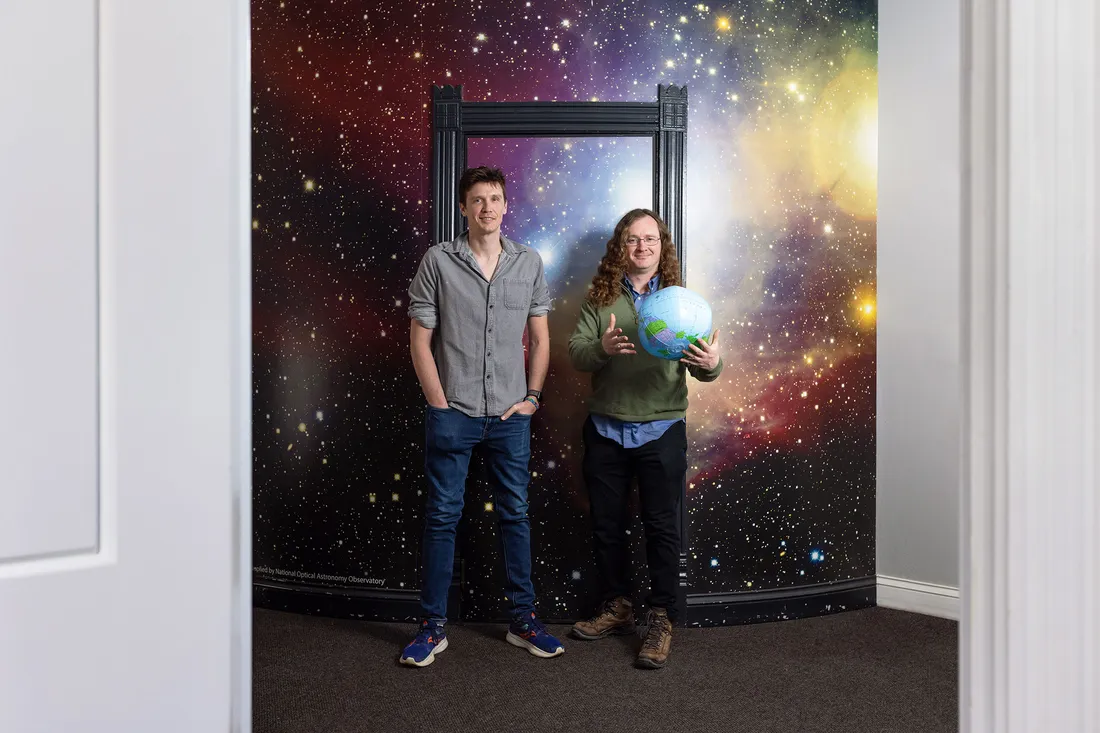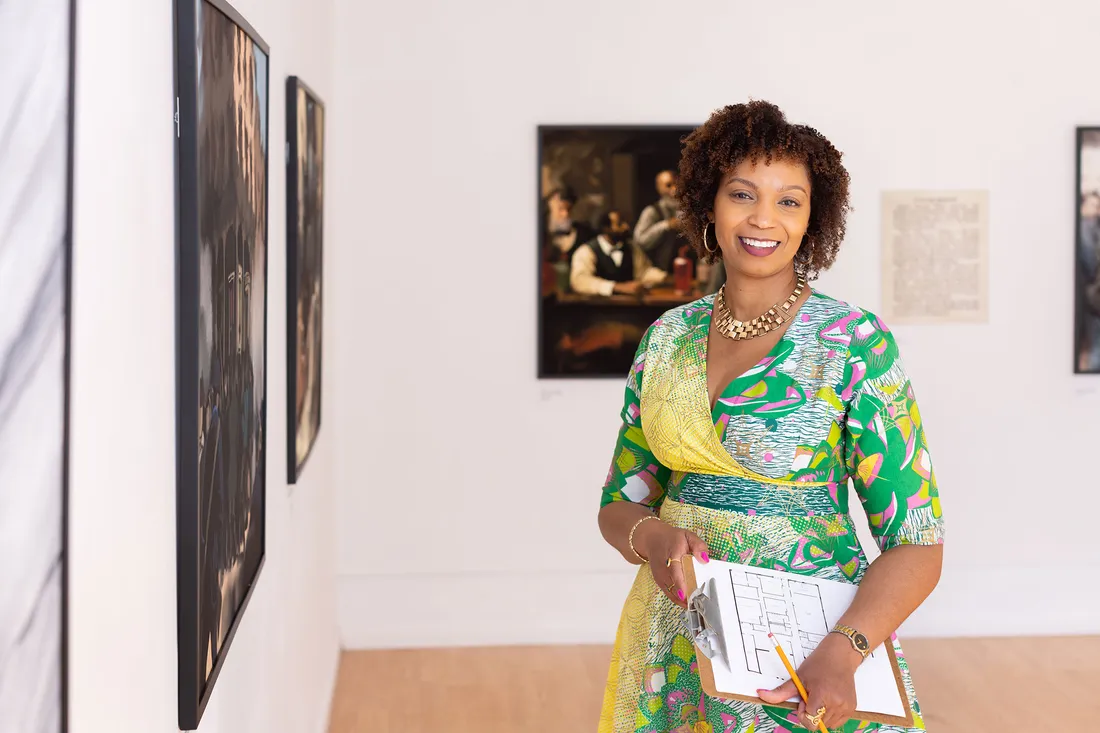Research, scholarship and creativity coexist and thrive at Syracuse University. While such work is on display in April, when the campus joins in the global celebration of Earth Month and Earth Day, studying environmental issues and developing sustainable practices is not limited to a single month. All year long, Syracuse students and faculty engage in creative endeavors, like architecture, storytelling and visual art, to forge new relationships with and fresh insights into our natural world.
Sarah Fellingham ’24, a senior majoring in architecture, recently took a nature drawing course that was life-changing. “Creativity is the bedrock of innovation,” she says. “By pushing your creative limits, you can do things that you’ve never done before and experience nature in a new way.”
Drawing on Nature for Inspiration With Professor Susan D’Amato
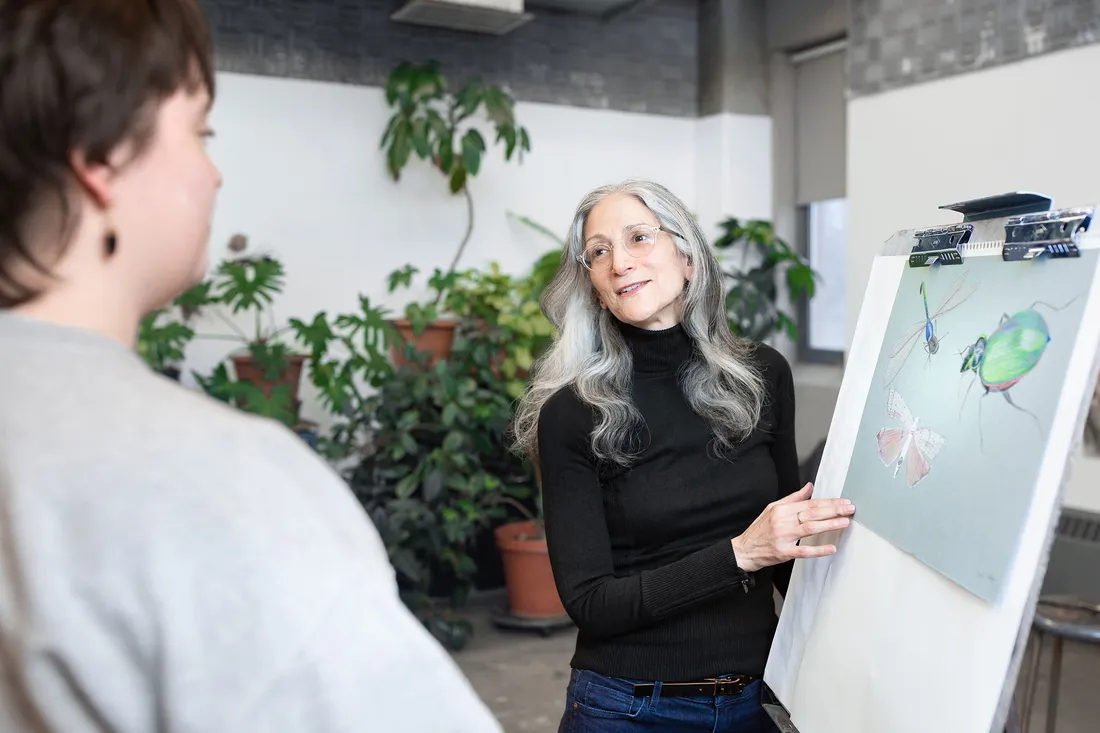
Professor Susan D’Amato (right) says courses like Drawing Nature, which she teaches every fall, enable students to “have direct experience in nature with an intention toward deep attention and discovery.”
Art professor Susan D’Amato believes images have the potential to not only activate the unconsciousness, but also help us understand the human condition. Her drawings speak to “the correspondences of bodily, earthly and cosmological forms and to notions of fleeting and enduring time.”
She leads a popular fall course titled Drawing Nature (ARI 233), where students draw at local parks, forests and cemeteries. “It enables them to have direct experience in nature with an intention toward deep attention and discovery,” says D’Amato, whose students also study and draw fossils in the paleontology lab of Professor Linda Ivany ’88.
Phoebe Ellen Sessler ’27, a sophomore majoring in film, was scared to attempt so-called physical drawing until she met D’Amato. Now she considers art a meditation that regulates her personal and academic life. “In Nature Drawing, we bridge the gap between my favorite place to be—outside in nature—and the academic creative classroom,” says Sessler, who has learned how to draw flowers from direct observation and use a walnut ink stick.
“Sitting in nature and studying what’s around you helps you realize your vision—from thought to hand to paper,” Fellingham adds. “It’s calming and sometimes thought-provoking.”
A drawing-based artist, D’Amato is working on a long-term project called Taxonomy of Air; from the Ten Thousand Things. The numeric title is a Taoist reference to the universe’s material diversity. Inspired by walking meditations in nature, she’s producing 10,000 ink drawings on small, torn pieces of rice paper that hang from pins to a wall. “They’re based on the felt sense and memory of my contemplative experiences in nature.”
Building a Sustainable Future With Professor Bess Krietemeyer
“Teaching is about thinking outside the box,” says architecture professor Bess Krietemeyer. An expert in sustainable built environments, she’s training the next generation of architects in environmental health and equity. “I want my students to imagine what environmentally just, sustainable architecture can be.”
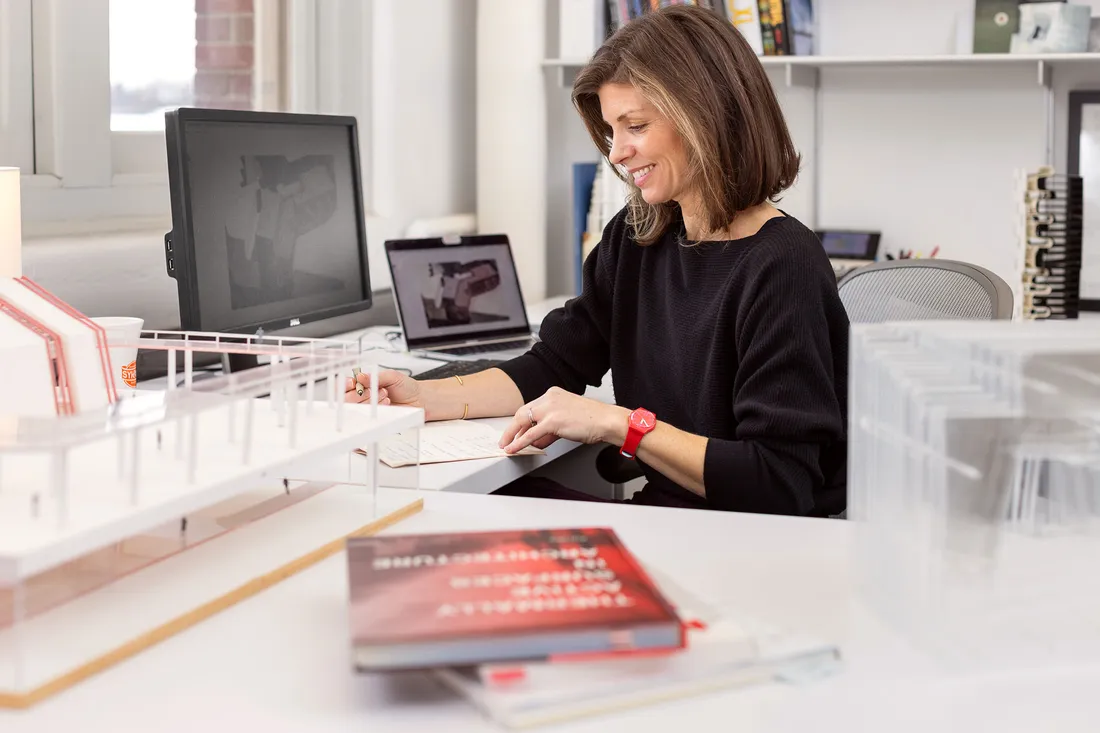
Bess Krietemeyer’s expertise in sustainable built environments permeates the Net-Zero Energy Retrofit Living Lab, which she co-leads with fellow architecture professor, Nina Wilson.
This attitude permeates the Net-Zero Energy Retrofit Living Lab, a three-year research project that Krietemeyer co-leads with fellow professor Nina Wilson. As part of the project, Krietemeyer designed an interactive, 3D exhibition at the Milton J. Rubenstein Museum of Science and Technology, extoling the personal, environmental and economic virtues of building retrofitting.
She and her students test these ideas on South Campus with support from a $5 million grant from the Department of Energy. Emily Lane G’24 draws on her chemistry background to better understand building materials, energy-efficient design and microecology. “I’m thinking beyond what is technically possible to become the architect I want to be,” says the master’s student of architecture.
Architectural creativity underscores almost everything Krietemeyer does. “Innovation emerges through productive constraints,” she says. “With design, we can inspire environmental consciousness and express diverse cultural identities."
Turning the Page on Environmental Storytelling With Professor Brice Nordquist
As climate change impacts biodiversity and human welfare, professors like Brice Nordquist are looking at environmentalism through a humanistic lens. He’s co-founder of the Environmental Storytelling Series (ESS) of Central New York, addressing the climate crisis with creative events, programs, workshops and courses.
“Environmental awareness, attunement and responsiveness require a full range of sensory, emotional and intellectual ways of knowing, being and doing,” says Nordquist, founder and director of the University’s Engaged Humanities Network (EHN) and professor of writing studies, rhetoric and composition.
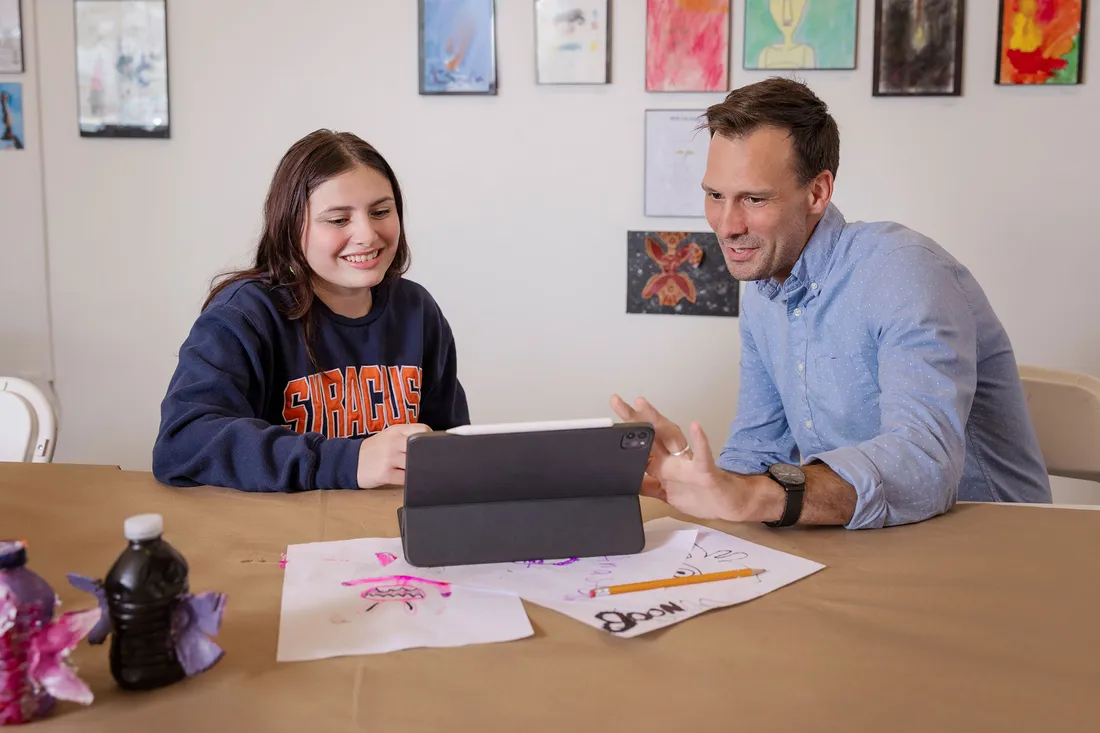
Professor Brice Nordquist believes environmental storytelling can bridge the gap between science and the humanities. “It personalizes environmental justice, while encouraging interaction and collective action.”
He considers ESS a striking example of environmental humanities, bridging the gap between the sciences and humanities. “The series shows how different kinds of storytelling can personalize environmental justice, while encouraging interaction and collective action,” continues Nordquist, who also serves as Dean’s Professor of Community Engagement in the College of Arts and Sciences.
EHN research assistant Valeria Martinez Gutierrez ’26 took up creative writing after working with two ESS visiting artist-activists. “Their visit was transformative,” says the triple major in environment, sustainability and policy; Earth sciences; and sociology. “Amplifying the knowledge and voices of people of color and their communities is vital to the environmental decision-making process.”
Fusing Art and Ecology With Professors Susannah Sayler, Edward Morris and Mike Goode
“All art is ecological,” admits Professor Susannah Sayler, quoting the title of the Timothy Morton bestseller. “It affects our relationship with the world.”
This is the idea behind the University’s Canary Lab, where she and her husband, Edward Morris, develop research-based art and media focusing on ecology. “The Canary Lab is a hub for ecological thinking,” says Sayler, who along with Morris, serves on the faculty of the Department of Film and Media Arts. “We provide students with opportunities to read, discuss and create artworks about a range of ecological topics.”
The duo has co-curated Assembly: Syracuse University Voices on Art and Ecology with Mike Goode, the William P. Tolley Distinguished Teaching Professor in the Humanities, and Melissa Yuen, interim chief curator of the Syracuse University Art Museum. Running on campus this spring, the exhibition places objects from the museum’s permanent collection in dialogue with contemporary artwork by faculty and alumni artists.
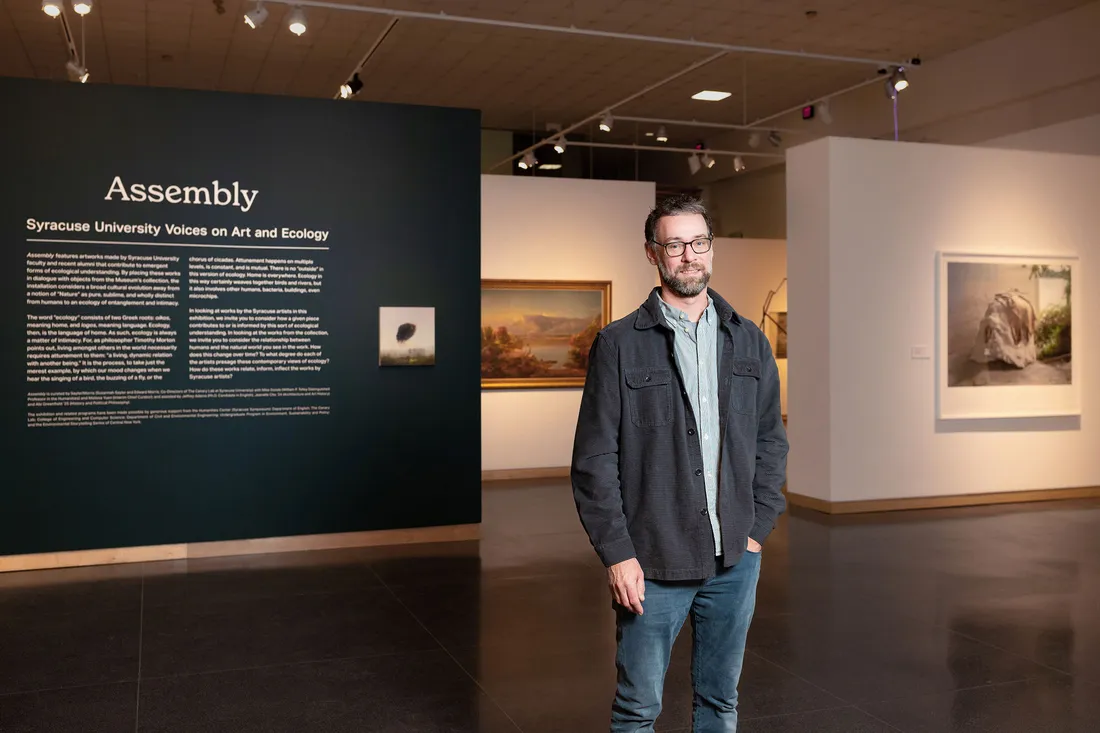
“Our goal is to highlight environmental issues and foster ecological understanding,” says Tolley Professor Mike Goode of Assembly, which is on display in the Syracuse University Art Museum through May 12.
“Our goal is to highlight environmental issues and foster ecological understanding,” says Goode, who as a Tolley Professor, gives humanities faculty access to artwork and educational materials for the teaching of ecology and climate issues.
Abi Greenfield ’25 assisted with the exhibition, whose opening coincided with that of the museum’s Art, Ecology and Climate Project. (The project has used the museum’s collections to create 15 virtual exhibitions on ecology.) A junior majoring in history and political philosophy, she says that some of the objects currently on display are hundreds of years old, proving that ecologically minded art is nothing new. “It’s just coming to a head now.”

